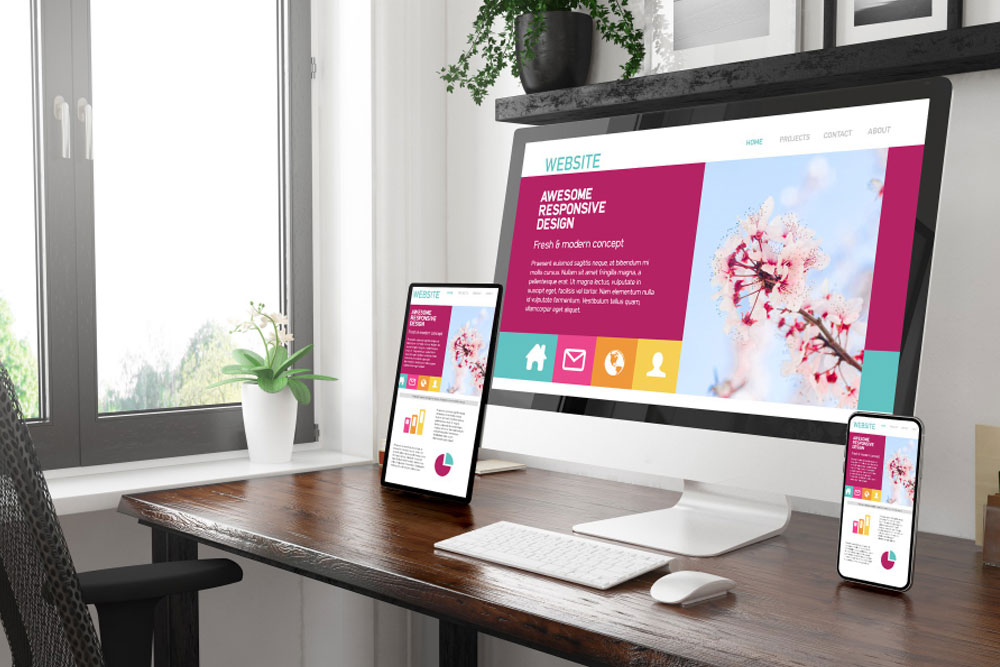In the tech-savvy world of Dubai where new businesses emerge daily, standing out from the digital crowd requires a competitive edge. One certain way to secure this advantage is through responsive web design, a potent tool that adapts your business website to various screen resolutions, thereby improving user experience and engagement. From start-ups to established corporations, Dubai-based businesses are embracing its transformative benefits, thus out-performing their competition. This article goes into every facet of it, illuminating how to harness its power for your business growth. Not only will you comprehend its integral role in modern-day digital dynamics, but you’ll also learn how to effectively implement it. Thus, whether you’re a budding entrepreneur targeting mobile users, or a large-scale company aiming for a wider reach, this guide is tailored for you.
Why is responsive web design crucial for your business?
Today, customers’ first impression of your business often comes from your website. If your website isn’t optimised for mobile devices, potential customers may leave before they’ve even had a chance to discover your products or services. It ensures that your website is accessible and attractive on all devices, from desktops to mobiles. It adapts the layout and design to fit the screen size, making it easy for users to navigate and interact with your site, regardless of the device they’re using.
Moreover, Google has shifted towards mobile-first indexing, which means it predominantly uses the mobile version of a site for indexing and ranking. If your website isn’t mobile-friendly, it could negatively impact your ranking on search engine results pages, making it harder for potential customers to find you online. In other words, responsive web design is not just about aesthetics, it’s about visibility and reach in the crowded digital marketplace.
Benefits of responsive web design for your Dubai-based business
For Dubai-based businesses, it offers numerous benefits. Firstly, Dubai has a high smartphone penetration rate, with most users accessing the internet via their mobile devices. By adopting responsive web design, you can effectively cater to this mobile-first audience, enhancing their browsing experience and increasing your chances of conversion.
Secondly, Dubai is a global city with a diverse population. Your website visitors may be using a wide range of devices with different screen sizes. It ensures your website looks good and functions well on all these devices, enabling you to reach and engage a wider audience.
Lastly, it can boost your SEO efforts. As mentioned earlier, Google prefers mobile-friendly websites. By improving the mobile-friendliness of your site, you can improve your ranking, increase your visibility online, and attract more organic traffic.
Successful businesses in Dubai using responsive web design
To illustrate the benefits of responsive web design, let’s look at some successful Dubai-based businesses that have embraced this approach. One such business is the luxury hotel chain, Jumeirah Group. Their fully responsive website provides a seamless browsing experience on all devices. This has not only enhanced user experience but also increased online bookings.
Another example is the e-commerce giant, Souq.com (now Amazon. ae). Their website’s responsive design allows users to shop comfortably from any device. This has played a significant role in their success, as a large portion of their traffic comes from mobile devices.
These case studies demonstrate how it can contribute to business success in Dubai. By implementing a responsive design, you can improve user experience, reach a wider audience, and ultimately drive business growth.

How to implement a responsive web design?
Implementing a responsive web design involves several steps.
- Plan your design: This includes defining your target audience, understanding their browsing habits, and deciding on the layout and design elements that would best cater to them.
- Create a flexible grid system: This involves designing your website’s layout in relative units like percentages, rather than absolute units like pixels, to allow the layout to resize according to the screen size.
- Use flexible images and media: This means ensuring that images and media files are also resized to fit the screen. You can do this using CSS techniques.
- Test your design: Testing it on various devices and browsers to ensure it works as intended. This step is crucial, as it helps you identify and fix any issues before your site goes live.
Tips to Optimise Your Responsive Web Design
While implementing a responsive web design is a significant step, optimising it can further enhance user experience and engagement. One way to optimise your design is by prioritising content based on screen size. For smaller screens, only display essential content and features to avoid clutter and ensure easy navigation.
Another tip is to optimise your images for different devices. High-resolution images can slow down your site on mobile devices, so consider using lower-resolution images for smaller screens.
Also, consider the touch interface of mobile devices. Ensure that interactive elements like buttons and links are large enough to be easily tapped on a touch screen.
Lastly, continually test and refine your design. User preferences and technology trends change over time, so it’s essential to keep your design updated to meet changing needs.
Catch the Digital Wave in Dubai
In the fast-paced, tech-driven city of Dubai, responsive web design is no longer a luxury; it’s a necessity. It’s an essential tool for reaching and engaging the mobile-first audience, improving your visibility online, and ultimately driving business growth. By understanding its benefits, learning how to implement and optimise it, and utilising the right tools, you can unlock the full potential of it for your Dubai-based business. So, start your web design journey today and stay ahead of the digital curve.




